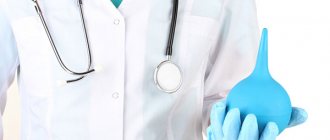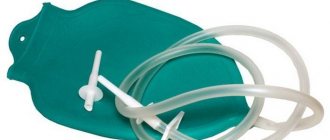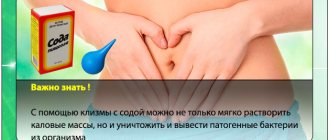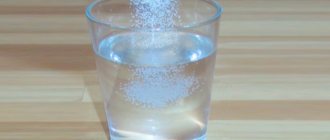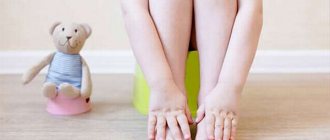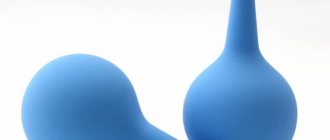An enema for newborns for constipation helps to quickly clear the colon of solid feces. In the first months, the baby may not have bowel movements for 4 days, which is normal. The baby's body is being rebuilt and begins to get used to complementary foods and formulas. The need for an enema appears when a child is in pain and is unable to go to the toilet on his own.
Lack of bowel movements: when should you sound the alarm?
When a baby reaches the age of three, new foods containing fiber are already present in his diet. Also, the child is constantly moving, so he should already have bowel movements 4-6 times a week. If a child walks less than the established norm and complains of pain in the tummy, the mother is obliged to show him to the doctor. If, during diagnosis, the specialist did not find any pathologies that cause constipation, the baby can be given an enema.
A three-year-old child should go to the toilet up to 6 times a week
Important! An enema only makes defecation easier, but does not solve the problem of constipation.
Frequency of the procedure and how to avoid it?
Frequent enemas for constipated babies have poor bowel movements, and their work is hampered by the constant washing out of beneficial bacteria.
An enema is given no more than once every 3 days. In case of chronic constipation, the doctor may prescribe a single procedure, repeated after 6 hours.
The best option is to never give an enema to small children, but to use alternative techniques:
- artificially provided children with clean water more often;
- Breastfed babies should be put to the breast more often;
- Mom should review the diet, include fermented milk products, fruits rich in dietary fiber, which, as is known, consist of fiber and are not digested in the human body.
A pediatrician may recommend syrup containing lactulose for prevention.
What types of enemas are there for children?
At home, you can give children up to two years old and older the following enemas:
- Cleansing. This enema is performed if the baby develops constipation, food poisoning, or before the administration of medications. The procedure is carried out using boiled water cooled to room temperature. This condition is very important because cold liquid can cause intestinal spasms,
- Medicinal. Carry out 45-55 minutes after cleansing the intestines of a newborn and older child. As a medicinal liquid, you can use decoctions (for example, chamomile) or special medicines,
- Butter. This enema is given to a 3 year old child for constipation. Suitable solutions include sunflower, petroleum jelly or hemp oil. The liquid must be heated to 36 degrees and carefully introduced into the body of a small patient. It is better to do the enema before bedtime, since the result will be at least eight hours later.
- Hypertensive. It is advisable to do it only if the baby has atonic constipation. A saline solution is used as a medicine. After completing the procedure, the child should lie on his back for 25-30 minutes. Defecation will occur within an hour and a half,
- Siphon. The siphon enema algorithm is carried out only by a medical professional.
What should you not do when performing the procedure?
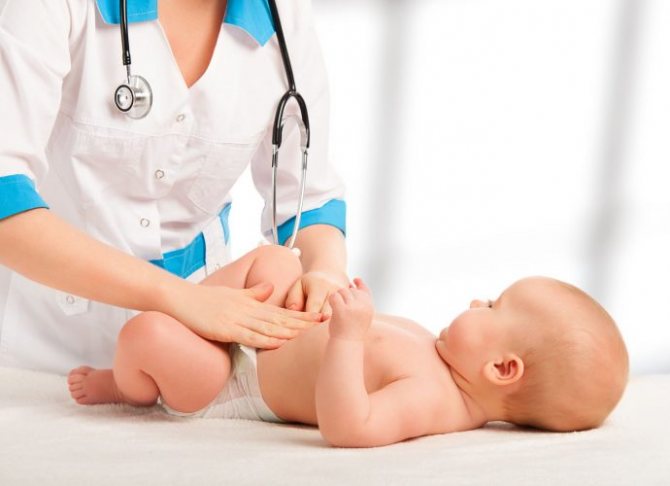
Before giving an enema to a newborn, adults should also calm down and:
- Do not exceed the required volume of the administered medicinal solution to avoid stretching the walls of the digestive canal.
- Avoid getting air into the rectum to avoid causing flatulence.
- Do not make rapid movements that could injure the baby’s soft tissues.
- Maintain the proper temperature of the solution so as not to increase the poisoning of the child’s body and not cause inflammation.
- Do not start the procedure without washing your hands and cleaning the syringe. An excited mother may forget about washing her hands and not wanting to contribute to the entry into the body of crumbs of infectious agents of a bacterial or fungal nature.
- Do not inject the solution quickly so as not to cause pain to the child.
How to give an enema correctly
Carrying out the procedure for a child involves using an Esmarch mug, a pear-shaped syringe, a Janet syringe or a 20-cc syringe with a special catheter (for newborns).
The procedure requires compliance with the following rules:
- The baby lies on his back, his legs rise up. You can also lay him on his left side and tuck his legs towards his tummy,
- The child’s buttocks are separated, the anus and syringe are lubricated with baby cream,
- The nose of the rubber bulb is carefully inserted into the baby’s anus by 3-5 centimeters,
- The syringe is slowly compressed so that all the contents come out,
- After completing the procedure, the tip is carefully pulled out, the child’s buttocks are squeezed so that the water does not leak out.
It is necessary for the child to lie in a horizontal position for 15-20 minutes.
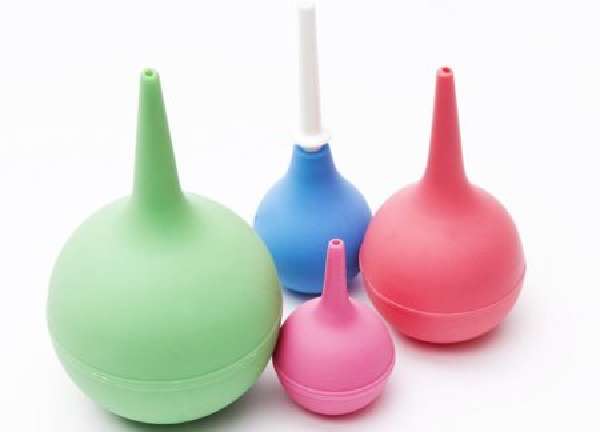
Pear-shaped enema syringe
Microlax
This drug is a microenema that can be used for infants. The enema composition helps soften the stool and empty the intestines.
The consistency of the drug is a thick liquid, the volume of which is 5 ml. The effect of the drug gives results 15 minutes after the enema is given.
Microenema has a number of advantages, including:
- Well tolerated by children;
- There are no painful spasms or contractions of the intestines;
- Equipped with a convenient applicator, which allows you to use the drug at home yourself;
- A special mark on the applicator shows the depth of insertion for children under three years of age;
- Does not affect the use of other medications.
This enema can be used for newborns from the first days of life.
At the same time, how much and how often it is possible to use this enema should be determined by the doctor.
What to do an enema with?
We present to your attention several simple and effective recipes for solutions suitable for infants.
With chamomile
A tablespoon of plant flowers is poured into 250 milliliters of boiling water, brought to a boil and boiled for 20 minutes over low heat. After this, it is infused for 30 minutes and filtered. Before use, the finished infusion is diluted with clean water in a 1:1 ratio.
Lemon juice + apple cider vinegar
Squeeze the juice of a medium lemon into a liter of boiled water and add a teaspoon of vinegar. The ingredients must be mixed thoroughly.
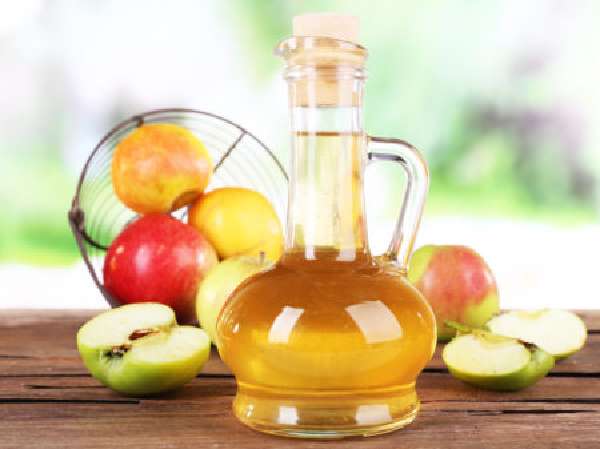
Apple cider vinegar for enema
Briefly: what is an enema?
An enema is a special medical procedure prescribed by a doctor. It is not advisable to install it yourself. It is worth considering the situation: the degree of the problem, the purpose of the procedure. However, it is always useful to consult a doctor.
Types of enemas
Today the classification is presented:
- Cleansing. The goal is to free the intestines from excess contents: accumulated feces, blockages, toxins that block free movement along the intestinal tube, restoring the natural way of releasing the body from toxins. Gives a cleansing effect.
- Nutritious. It is carried out to fill the body with nutrients. A quick way, the body instantly receives elements useful to it.
- Medicinal – intended for the treatment of pathologies. Do it on the recommendation of a doctor.
Alternative solutions to enema
If a child complains of pain during bowel movements, and his tummy is swollen and the baby constantly cries, you can use several methods to make it easier to pass hardened feces.
Baby or plain soap
A small piece of the substance is soaked under warm water until it becomes slippery. The soap is then carefully inserted into the baby's anal passage. The substance will help soften stool and make stool easier to pass. Soap can be used to make rectal suppositories.
Thermometer
The narrowed part of the thermometer must be inserted into the child's anus and scrolled in different directions, thereby provoking irritation of the rectum. After some time, the child should have a bowel movement.
Cotton swab
The principle of using this method is similar to using a thermometer. Only before this the cotton wool is treated with baby cream, soap or petroleum jelly.
Microlax
Microlax must be injected into the body up to the mark indicated on the spout, squeeze out the contents of the container and pull it back. Lightened bowel movements should occur within two hours.
Indications
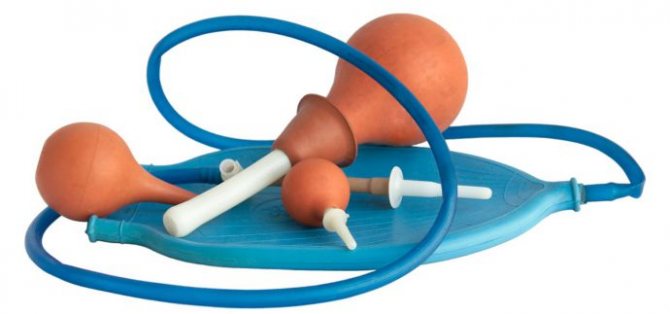
Children's enema cannot be given for prophylaxis.
It is performed in exceptional cases and only as prescribed by a pediatrician if:
- The medicine needs to be administered.
- Poisoning occurred.
- The child is constipated, and the very process of defecating hard feces causes him unbearable pain and suffering.
- Abdominal pain in a child, which can be caused by:
- intestinal obstruction;
- pneumonia;
- internal hernia;
- appendicitis, etc.
If you suspect constipation in a baby, it is better for the mother to change her diet, for example, include beets, prunes, oatmeal, dried apricots and other products with a laxative effect in the menu. In case of artificial feeding of the baby, switch to other milk formulas.
If the situation does not change after this, the newborn will have to give an enema, the main thing is to know which one and how exactly to do it, so as not to damage the delicate intestinal mucosa with the tip of the syringe and not to affect the still unformed microflora.
Medicinal
This is another type of therapeutic enemas, their purpose is to administer a medicinal substance. Their volume is usually no more than 50 ml.
30–40 minutes before the procedure, be sure to empty the intestines using a cleansing enema. A medicinal enema is given at night, the medicine should be absorbed into the intestinal wall.
They come in three types:
- Local enemas, or microenemas. They are placed to provide a local effect on the walls of the rectum in case of its diseases. For example, a solution of prednisolone is administered for chronic inflammation of the large intestine, and chamomile infusion is administered for inflammation of the rectum.
- General enemas. Many drugs, when administered orally or intravenously, are almost completely destroyed in the liver. When a drug is administered rectally, it immediately enters the general bloodstream, bypassing the liver. Therefore, some medications that are destroyed by the liver are administered rectally.
- Drip enemas. Used when there is a large loss of blood or fluid; as artificial nutrition through the rectum. For example, after vomiting, a child becomes severely dehydrated, the blood becomes viscous and intravenous administration of drugs is difficult. In this case, a drip enema of saline solution is prescribed. Its peculiarity is the duration of the procedure - it is left overnight.
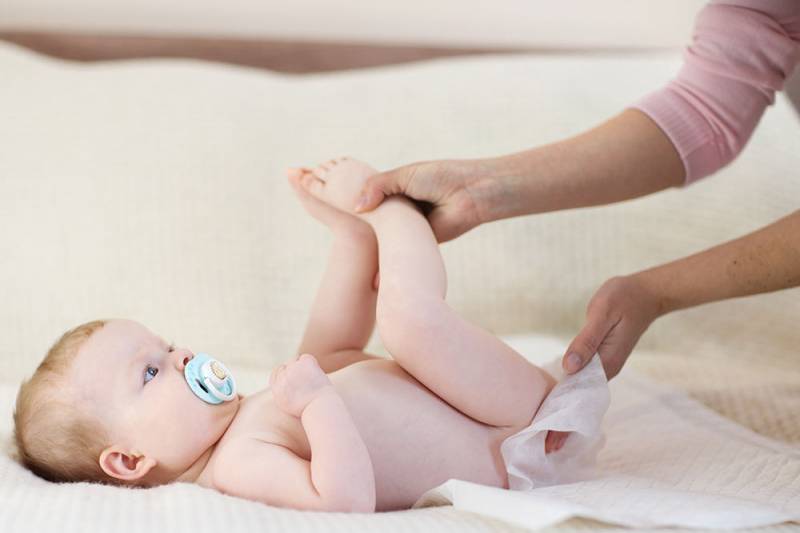
Some ways to give an enema
The opinion of non-specialists, “medicine lovers” is well known - to give an enema, it is better to place the patient on his right side. Traditional medicine recommends the opposite: to the left. The reason is stated above.
Supporters who defend the right-sided position of the body during washing say that it is necessary to increase the pressure of the water flow so that it reaches all the necessary parts of the organ. An Esmarch mug is used, suspended at a height of two meters above the surface on which the patient lies.
There is a big “but”: if the pressure of the injected water increases, the load on the intestines and its walls will correspondingly increase, and the load on the entire body will increase. Intensive infusion is accompanied by pain. Imagine how strong the pressure must be to move in the convolutions of the intestines. There is a direct relationship: less pressure - less inconvenience.
Conclusion: preference should be given to the classical medical method of intestinal lavage. In addition, when a person lies on the left side of the body, the load on the heart is not so great. So the myth that you need to sleep on the right side to avoid effects on the heart has been dispelled.
Indications and contraindications for cleansing enema
It is used to liquefy and evacuate the contents of the lower colon. She is prescribed:
- For constipation.
- To remove toxic substances in case of poisoning or intestinal infections.
- Before operations.
- Before X-ray examination of the intestines.
- Before using medicinal enemas.
- Acute inflammation of the colon mucosa.
- Acute appendicitis.
- Gastrointestinal bleeding.
Contraindications:



